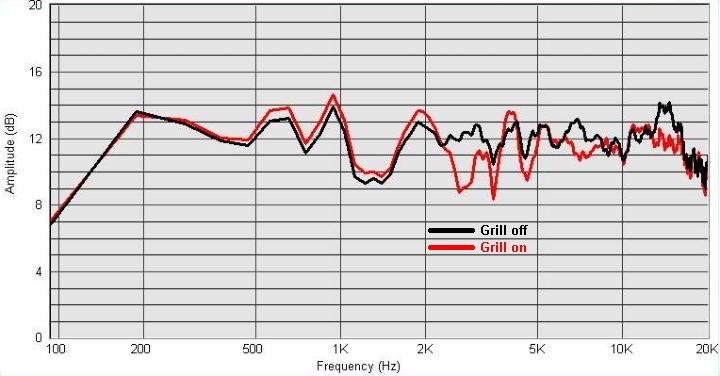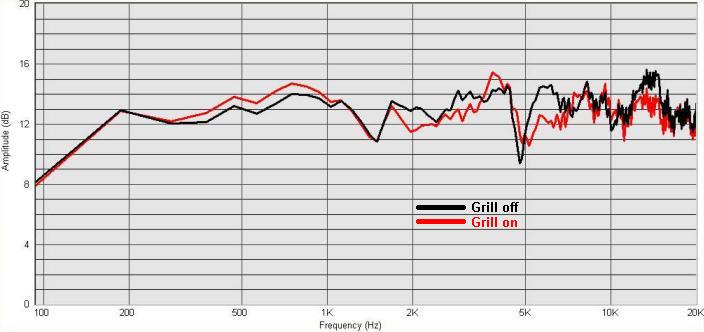Grill frame diffraction and its effects on frequency response
Introduction
Many DIY speaker designers prefer not to use speaker grills due to the negative effects they can have on the frequency response of the speaker.
However, sometimes it is desired to hide the drivers using speaker grills both for looks and protection. Ideally if you choose to incorporate
speaker grills into your design you should probably take measurements and design the crossover with the grills on. In order to ameliorate the
frequency response when using speaker grills one option is to use acoustic felt around the inside frame of the grill especially around the tweeter
to absorb the reflections that would normally be caused by the grill frame. In this section I will discuss the effects of using grill frames including
the advantages of using acoustic felt. I will present real-world measurements of different designs with the grill frames installed and removed to
give an example of the effects the grill frames can have on the overall frequency response of the speaker.
Calypso grill effects (no felt applied)
Shown above is a plot of the measured frequency response of my Calypso two-way speaker design with and without the grill installed. The grill
frame is constructed from 1/2" MDF and covers the outer perimeter of the baffle. As you can see from the plot most of the negative grill frame
effects occurs in the frequency range from 2kHz to 10kHz. Within this range reflections from the tweeter cause interference, mostly destructive,
resulting in an alteration of the frequency response. The most prominent reflection occurs around 3kHz where there is a drop of 3dB when the
grill is installed. There are a few other peaks and valleys caused by the grill frame in this region but they are less noticeable. If you examine the
reponse below 2kHz you'll notice that there is a slight boost in the response when the grill is applied. This most likely has to do with the woofer's
interaction with the grill frame and you'll notice the same thing in the next example below. Above 10kHz there is a slight attenuation which I believe
can be attributed to losses caused by the grill cloth. This attenuation also shows up in the next example below as well.
Asterion grill effects (felt applied to grill)
Shown above is a plot of the measured frequency response of my Asterion two-way speaker design with and without the grill installed. The grill frame is constructed of 1/2" MDF and I lined the inside of the grill frame with 1/2" thick felt above and to the sides of the tweeter. As you can see from the plot, the grill still changes the response but I would have to say that the difference is not quite as severe as it was with the Calypso design that didn't use felt around the tweeter. Most of the grill diffraction effects occur between 2kHz and 7kHz with the largest deviation being a 2dB difference at 6kHz. Like the Calypso, the response is a bit stronger in the 500Hz to 1kHz region due to frame diffraction effects with the woofer. There is also a slight bit of attenuation above 10kHz due to the grill cloth.
So this gives you two examples of how the application of grill frames can affect the frequency response of a speaker design. You can judge for yourself
whether adding a grill frame alters the frequency response enough to be an issue. If you do decide to use a grill frame with your design it would
probably be wise to take measurements and tune the filter with the grill frame in place. With the Calypso design I took measurements with the grill
frame removed and designed the crossover based on those measurements. As a result, the finished design with the grill frame attached is not quite
as flat as the original design with the frame removed. I don't know enough about what type of interactions are occuring between the drivers and the
frames so I left that part up to you to figure out.
 |



